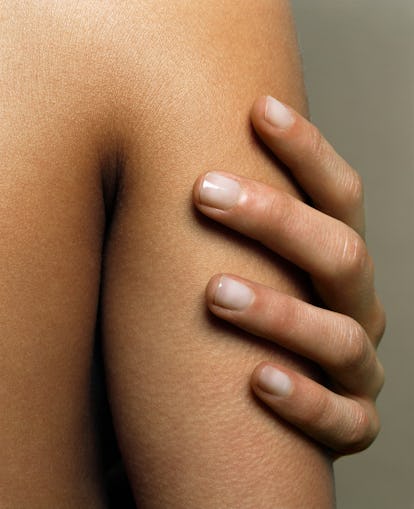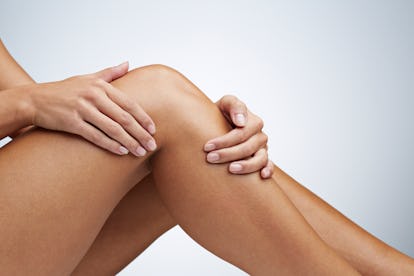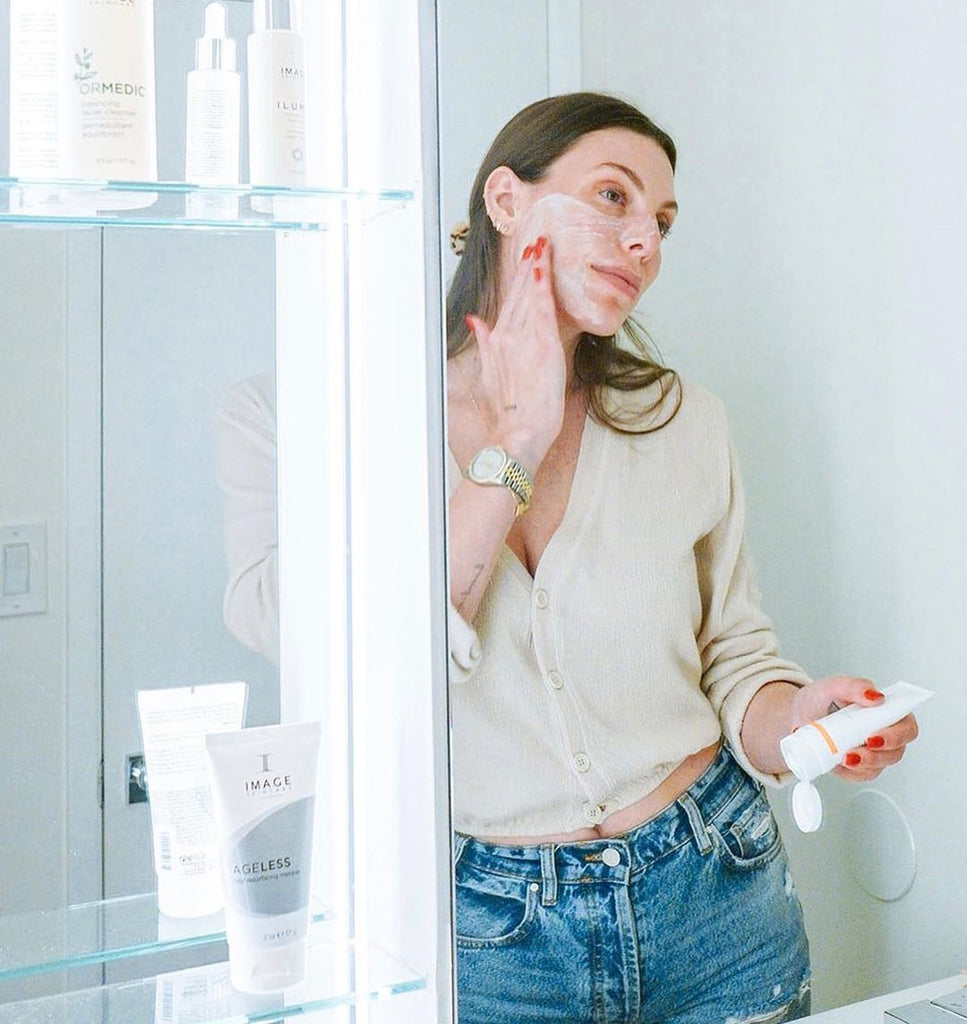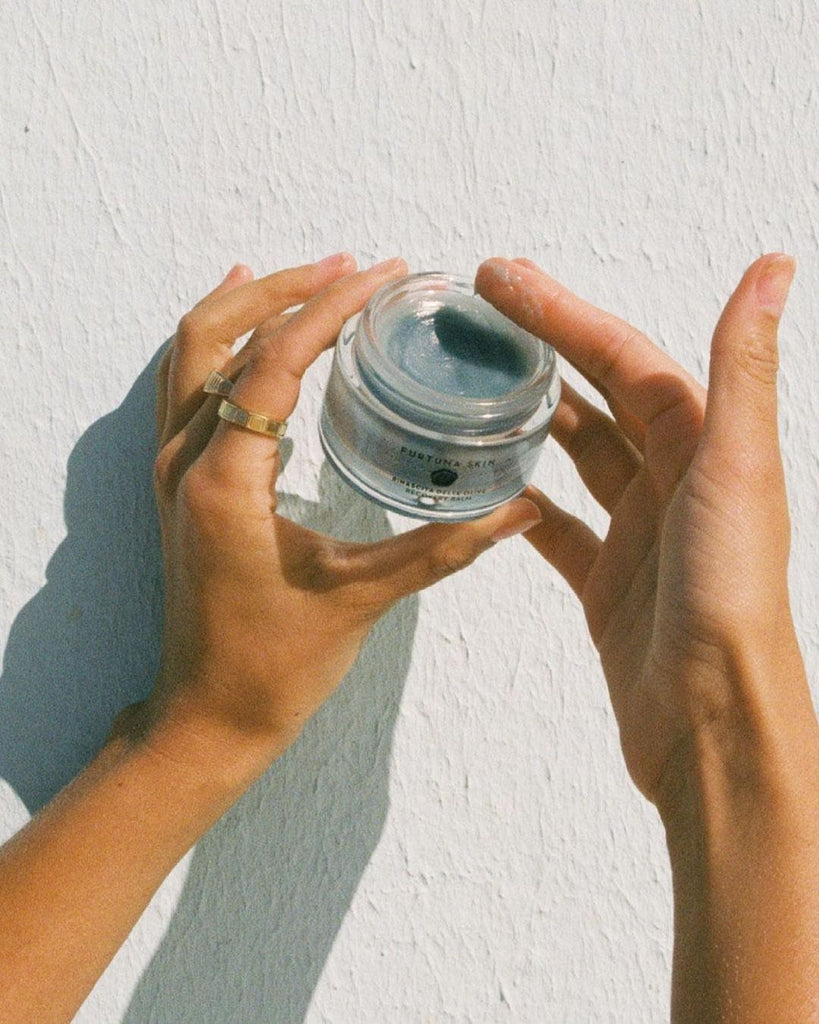Whether you call it keratosis pilaris, “KP,” “follicular keratosis,” or the more colloquial and slightly unsettling moniker, “chicken skin,” it all describes the same thing: a condition characterized by small bumps and rough patches of skin. While it’s unclear exactly how many people have it, estimates clock in around 50-80 percent for teenagers and 40 percent for adults. That’s substantial. The good news is that keratosis pilaris is manageable. You just have to know the basics in order to minimize its appearance and effectively treat it.
According to Dr. Lian Mack, a board-certified dermatologist, and CATRICE Cosmetics ambassador, “Keratosis pilaris, also known as KP, is a common skin condition characterized by asymptomatic tiny dry bumps or patches that often look like chicken skin and feel like sandpaper. It is most commonly seen on the arms, but may occur on the thighs, buttocks, or cheeks.”
These bumps and patches can be red, white, or skin-colored, and they’re completely painless. Fortunately, they also don’t point back to any type of disease or more serious dermatologic condition. “This skin condition is more of a cosmetic issue for most, as KP is completely harmless and is not an indicator of chronic or acute disease,” explains celebrity esthetician Candace Marino.
Want to know more about this skin condition, what causes it, and how to treat it (both at-home and in-office)? Keep reading to learn everything you need to know about KP, according to the experts.

What Causes KP?
At its core, KP is caused by a buildup of keratin (the protein that makes up your hair, skin, and nails) in your hair follicles. This keratin creates a small bump, raising the texture of the skin. But for as common as the condition is, Dr. Mack tells TZR that, “it is unclear why this molecule builds up in some people and not in others.”
Board-certified dermatologist and founder of Visha Skincare, Dr. Purvisha Patel, says it’s a genetic defect that “prevents the skin from exfoliating — resulting in the keratin forming plugs over the hair follicles, causing a prickly feel and appearance of the skin.” Similar to the way a lack of regular exfoliation on your face can cause a rough and uneven complexion, keratosis pilaris is a collection of pore defined clogged follicles.
Who Is Most Prone to KP?
Since it’s genetic, you’re more likely to experience KP if your family members do as well. The pros say that you’re also more likely prone to it if you have dry skin. “Keratosis pilaris tends to be worse for most people during the colder months,” Dr. Mack says. “It tends to be most active in younger individuals, [and improves] with age.”
Marino seconds that. “KP generally develops in childhood and is most commonly found in people who have a family history of eczema, asthma, and allergies,” she says. “Children and teenagers commonly experience it and it can last into adulthood.”
While it’s generally most common among people who have fair skin, anyone with any color skin tone can develop KP. Experts are still unsure as to exactly why some people experience this build-up of keratin while others do not. Luckily, there are effective treatments (both of the at-home and in-office variety) that you can turn to if you’re one of them.

How to Treat KP At Home
Here’s the thing about KP — it can’t be “cured,” per se, but it can be managed. All three experts agree that regular exfoliation is key. “Since KP is a disorder of exfoliation, I always recommend exfoliating 2-3 times per week, followed by a deep hydrating treatment,” Marino says. “Body brushing is a great way to slough off [skin] cells to aid in the skin's exfoliation process and prevent the dead cell buildup within the follicle that leads to KP. I then want them on a good skin care routine that consists of acids that will help to break down the buildup in the follicle and nourish the skin in attempts to achieve balance.”
The use of exfoliating acids can be particularly effective when dealing with KP. Dr. Mack recommends “driving cellular turnover” with alpha-hydroxy acids. Dr. Patel specifically recommends lactic, glycolic, uric, and salicylic acids (a beta-hydroxy acid) for use on KP. “The acids help exfoliate the skin, unplug the follicles, and make the skin smoother,” she says.
Depending on the severity of the KP, exfoliation can offer an immediate improvement in the look and feel of the skin. Continuing to exfoliate regularly — as often as every day— can lead to consistently smoother skin.
How to Treat KP In-Office
If your case of KP is severe and at-home treatments won’t cut it, there are professional-grade treatments you can turn to for help. “For severe KP, I often recommend a medical-grade chemical peel with a higher concentration of salicylic acid [at] 30%,” Dr. Mack says. “If my KP patients have redness or inflammation associated with the roughness, I recommend a prescription-strength urea or cortisone cream. Manual extraction of the keratin plugs is also an option.” Other possible procedures include Hydrafacials, microdermabrasion, and lasers to reduce redness. Consulting a dermatologist is the best bet when it comes to choosing the right treatment for you.
For severe cases of KP, Marino recommends something calling the JetPeel system. “In my experience, harsh exfoliating can actually impair the skin integrity and cause a disruption in the barrier, and for that reason, I like my clients to use chemicals and enzymes as their main forms of exfoliation and shy away from things that are too harsh and abrasive,” she says. “JetPeel is a noninvasive procedure that uses jet engine technology to spray air and customized liquids to cleanse and exfoliate your skin.”
Whether you stick to using at-home treatments or opt to go in for professional-grade options, know that treating keratosis pilaris isn’t a one-and-done thing. As Dr. Patel puts it, “since it is genetic, KP comes back and it is a chronic process. Continue to use exfoliating agents daily to keep the skin smooth.”
Looking for a new KP-specific body product to add to your routine? Check out five recommendations from the experts.



